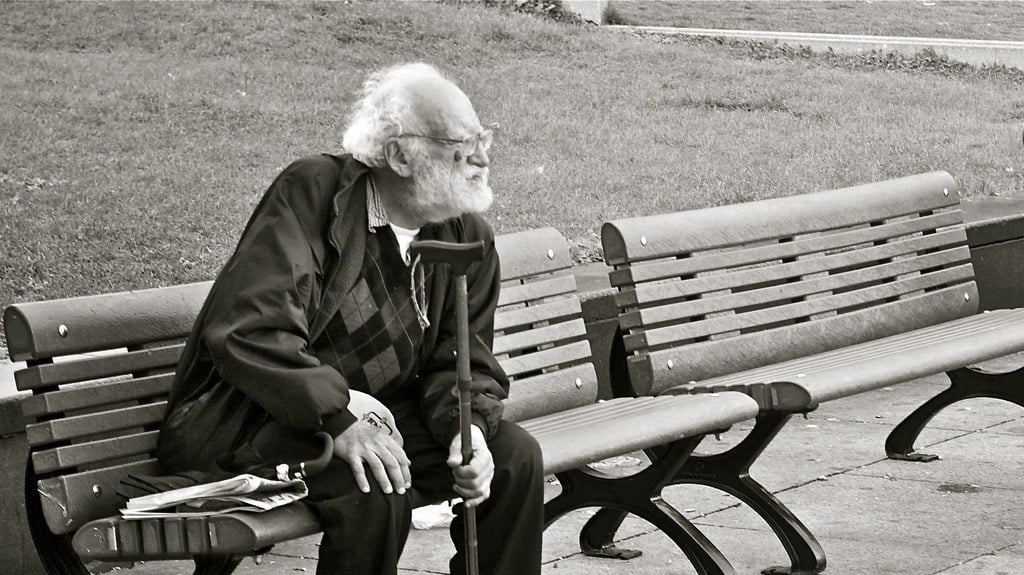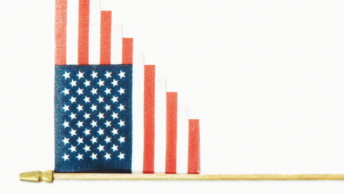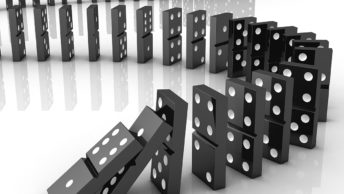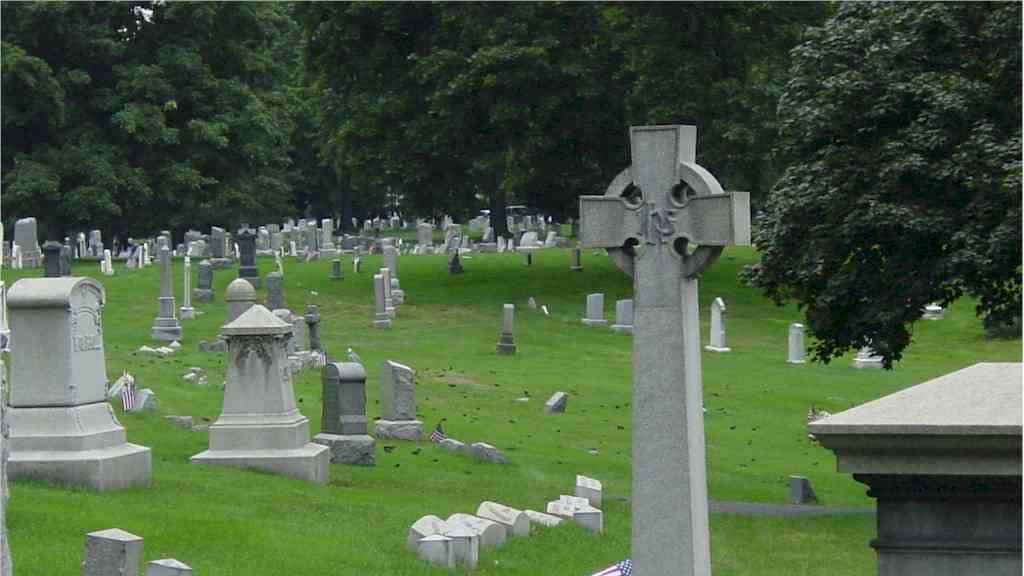Following the Covid-19 lockdown, which is still not completely over in many states, Americans witnessed widespread rioting and looting in late May and June, followed by a campaign to “defund the police.” At the same time, persons associated with Black Lives Matter and the anarchist movement Antifa seized six city blocks in the Capitol Hill district of Seattle. Numerous historical statues have been torn down. Newspaper editors and sportscasters have been fired for not falling in line with the narrative of systemic racism. The putative wrongs being addressed include “white privilege” and a history of “white supremacy.” These events have led average Americans across the country to ask what is happening in America today. How did we get to this place in our history? What is happening in America today is a cultural revolution by the left, which seeks to radically transform America. This movement is more than just a call for “racial justice.” It should be seen as an insurgency. For decades the left has been waging a cultural war against private enterprise and traditional Christians and Jews. The left has taken over nearly every major institution in our nation: universities, public schools, the media, entertainment, major corporations and the nonprofit sector. The Mindszenty Report has described many aspects of this cultural war, including the revolutionary intent and leadership of Black Lives Matter; the extensive network of activist organizations funded by George Soros; the campaign to elect “progressive” local prosecutors; and attacks on Christian student organizations, religious orders, small business owners, professors and aspiring appellate judges. Even if progressives suffer a setback in this current insurgency, they will return having learned from their mistakes. Whatever else the left is, it is persistent. For average Americans, riots, looting, city takeovers, and a movement to defund the police are disturbing, but average Americans have problems of their own—job obligations (if they still have a job during the pandemic), bills to pay, family challenges, illness, injury, car and home repairs, and all the other mundane concerns we call life. Average Americans are not single-minded, professional revolutionaries. A reminder of what has happened in the last month should provide perspective on this cultural revolution before we delve deeper into the history and strategy of the revolution.
Following the May 25 death of George Floyd after a Minneapolis police officer held his knee to Floyd’s neck, demonstrations broke out in 1,382 places in all 50 states. In major cities across the U.S., these demonstrations let to rioting and massive looting. Even in fairly conservative cities, such as Scottsdale, AZ, hundreds of looters trashed the upscale Fashion Square Mall at the heart of the tourist zone. Big cities bore the brunt of the riots and looting.
MOBS ACROSS AMERICA
The riots were so extensive that the press could not keep track of all of them. A salient feature of most of them was the reluctance of mayors, city councils and police chiefs in Democrat-run cities to stop or punish rioting and looting for fear of escalating tensions. Finally, under public pressure, some state National Guard units were mobilized to restore order. Reporters did little to distinguish peaceful demonstrators, radical activists encouraging violence, and thugs looting and vandalizing. Major chain stores such as CVS and Walmart were looted, small businesses burned and bystanders were attacked. Local police found themselves under assault by mobs who hurled cement-filled bottles, rocks and bricks at them. In Chicago from May 29 through May 31, 25 people were killed and additional 85 wounded by gunfire as police found themselves under-manned. In that weekend Chicago’s 911 emergency call center received 65,000 calls. Even radical activist Rev. Michael Pfleger complained that it appeared to be “open season” on the south and west sides of the city. Pfleger told the press, “On Saturday and particularly Sunday, I heard people saying all over, ‘Hey, there’s no police anywhere, police ain’t doing nothing.’ I sat and watched a store looted for over an hour. No police came.” As looting reached a fever pitch, tensions between Mayor Lori Lightfoot and members of the city council boiled over on a conference call on Sunday, May 31. Alderman Michelle Harris complained to Lightfoot that nothing was being done to protect her ward. She told the mayor, “My major business district is shattered. Why would Walmart or CVS come back to our communities?” Alderman Susan Sadlowski-Garza chimed in pleading for help, “My ward is a sh*t show; they are shooting the police.”
Alderman Raymond Lopez added, “We’re seeing this destruction, and we’re thinking that it’s going to somehow end tonight. We’ve seen where, in other cities, this has gone on for days, and we need to come up with a better plan for days, at least for the next five days, to try to stabilize our communities.” Lightfoot responded, “I think you’re 100 percent full of s**t.” This exchange reveals how poor the leadership was in Chicago, a city notorious for its weekly death tolls of gangbanger killings and shootings even before the riots. A similar failure of leadership was evident in major cities across the country. In New York City, police lines stood while bricks were thrown at them, and looters ran amok. NYPD Commissioner Dermot Shea declared that the looting was organized and that bricks and rocks were strategically placed in locations across the city. He showed a video of four blue boxes filled with gray debris. In the Bronx, demonstrators threw bricks and water bottles filled with cement at the police. Two lawyers are now facing federal charges for throwing Molotov cocktails at police vehicles. Shea took issue with reporters who were telling their audiences that the demonstrations were peaceful: “If anyone is questioning what is happening, your head is either in the sand or you’re not paying attention. There is an orchestrated attack specifically on members of law enforcement across the country and we are seeing it, unfortunately, alive and well in NYC.” While riots and looting occurred throughout the East Coast and Midwest, Los Angeles exploded. The looting was not just in poor neighborhood stores. High-end stores were targeted in trendy retail strips. In Santa Monica, teams of young people ransacked stores as protesters marched. This was daylight looting in white-, black- and brown-owned stores.
MINORITY-OWNED BUSINESSES TRASHED
One store owner in Hollywood, Eddie Perez, was especially shocked when his store was looted. The owner was the son of a Guatemalan immigrant. He had swept floors and done construction work for decades to save up enough money to open his store three years earlier. The store was completely destroyed by looters in 45 minutes. The owner and his family were activists who supported the demonstrations until their store was looted. They had put up a sign “Justice for George Floyd” in the window of the store before it was looted. Perez told the LA Times, “I’m just very angry at the fact that we are a minority-owned business and we stand so much with the movement. It destroyed my trust in the world for that day.” Why him? The answer was simple: As one of the looters told a reporter, “We’re doing it because we can.” In Las Vegas, riots turned deadly as the Circus Hotel and Casino was hit by rocks and bottles from the crowd. As police tried to hold the line, a shot rang out, hitting a Vegas police officer. The officer is now on life support and paralyzed from the waist down. After three days of violent demonstrations, 338 people had been arrested. Police used tear gas and pepper balls to disperse the crowds.
In some cities, including New York and St. Louis, most of the arrested rioters were promptly released, thanks to new “bail reform” laws and sympathetic progressive prosecutors. Fortunately, U.S. Attorney General William Barr’s Justice Department has coordinated a federal effort to prosecute domestic terrorists who might otherwise fly under the radar of criminal accountability. Hostility to police worsened after an Atlanta police officer fatally shot a man who assaulted policemen while being arrested for drunk driving on June 12. During the confrontation the assailant seized a Taser stun gun from a policeman, and while fleeing he turned around and fired the Taser at another officer. The officer returned fire, leaving two shots in the assailant’s back. The grandstanding Atlanta district attorney promptly indicted the officer for felony murder, before an official investigation was concluded and without a grand jury hearing. Just weeks earlier the same DA had stated that a Taser is considered a deadly weapon under Georgia law.
A FALSE NARRATIVE
Many of the urban demonstrations against police were led by Black Lives Matter (BLM), a well-funded self-styled revolutionary organization. The Mindszenty Report in September 2016 warned: Founded by three militant feminists, Alicia Garza, Patrisse Cullors and Opel Tometi, BLM has organized a powerful social movement involving an extensive network of radical political groupings, social media organizations, and community organizers. Make no mistake about this: BLM is a more than a movement that inspires some crazies to attack police protecting our streets and communities; it is a revolutionary movement being funded by the rich and powerful. BLM’s slogan “Black Lives Matter” has attracted demonstrators who agree with the general sentiment that innocent people should not be murdered by police. Yet BLM goes much further, contending that systemic racism is responsible for many police killings of blacks. Actually, most people killed by police are white; those cases receive far less media attention. As Heather Mac Donald recently pointed out in the Wall Street Journal, In 2019 police officers fatally shot 1,004 people, most of whom were armed or otherwise dangerous. African-Americans were about a quarter of those killed by cops last year (235), a ratio that has remained stable since 2015. That share of black victims is less than what the black crime rate would predict, since police shootings are a function of how often officers encounter armed and violent suspects. In 2018, the latest year for which such data have been published, African-Americans made up 53% of known homicide offenders in the U.S. and commit about 60% of robberies, though they are 13% of the population. Bear in mind that most police shootings of civilians are deemed justified, for example as self-defense against an armed suspect.
Unjustified killings by police undoubtedly occur and should be punished, but they befall more whites than blacks. Systemic racism is not the explanation. According to the Washington Post’s database on police shootings, nine unarmed black people were shot dead by police in 2019, while 19 unarmed white people met the same fate. Of those nine, one analyst concluded that all involved suspects using potentially deadly force. Although statistics on shooting deaths do not include police killings by other means (such as in the case of George Floyd), nine police shooting deaths of unarmed blacks out of 375 million police contacts with civilians in a year is a small number. In a study of officer-involved shootings in four states from 2000 to 2015, Harvard economist Roland G. Fryer Jr. “found no racial differences in shootings overall, in any city in particular, or in any subset of the data.” It should be noted that police unions in many jurisdictions have built up layers of protection of police job security, such that firing or disciplining police officers for excessive use of force is difficult and subject to lengthy appeal rights, which often result in rein-statement. There is surely room for reform of public sector union privileges, as well as standards for use of force. Buried by the media and ignored by BLM are shooting deaths of police officers. According to FBI statistics found in Law Enforcement Officers Killed and Assaulted, 2019, 48 officers died in 2019 as a result of felonious acts. A number of shocking shootings of policemen occurred in the June riots, including five in St. Louis alone.
DEFUNDING POLICE and SOCIALIST GOALS
BLM helped organize or take advantage of demonstrations that erupted after the death of George Floyd. BLM directed these demonstrations to demand “defunding the police.” That crazy demand gained traction when seven members of the Minneapolis city council announced that they supported disbanding the Minneapolis Police Department entirely. City Council member Lisa Bender told a rally, “Our commitment is to end our city’s toxic relationship with the Minneapolis Police Department, to end police as we know it, and to recreate systems of public safety that actually keep us safe.” In a later television interview, she labeled calling 911 during a break-in as “white privilege.” Exactly what the Minneapolis City Council envisions replacing the police is not clear, although there was talk of rapidly mobilized social worker squads. Across the U.S., mayors and city council members took up the cry to defund the police (which seems to mean different things to different people), including New York City Mayor Bill de Blasio, Los Angeles Mayor Eric Garcetti, Baltimore Mayor Bernard C. Young, Chicago alderman Rossana Rodriguez-Sanchez, and city council members in St. Louis, Hartford, CT and Washington, DC. BLM appeared to have hit paydirt and become a political party unto itself. Hardly anyone bothered to examine the long-term agenda of the organization, as expressed in its own manifesto. BLM’s “Vision for Black Lives Matter,” issued in late 2016, laid out planks including: “Remaking the current U.S. political system in order to create real democracy.” “An end to white supremacy, imperialism and capitalism.” “Democratic control over how resources are preserved, used and distributed.” “Direct community control of local, state, and federal law enforcement agencies.” The manifesto calls for a universal basic income, a universal entitlement to health care, collective ownership of property, reparations for slavery, slashing the military budget by 50 percent and ending all U.S. aid to Israel. Any lingering doubt about BLM’s revolutionary socialist agenda should be dispelled by its statement mourning the death of Fidel Castro: “As Fidel ascends to the realm of the ancestors, we summon his guidance, strength, and power as we recommit ourselves to the struggle for universal freedom. Fidel Vive!” This is an organization that raked in $100 million from progressive foundations as early as 2016, including the Ford Foundation, Borealis Philanthropy and various Soros-funded foundations. In the wake of George Floyd’s death, corporate America has been falling all over itself to make generous donations to racial justice causes including Black Lives Matter.
HOW DID WE GET HERE?
We face today an insurgency stemming from a four-decades-long cultural war. A progressive takeover began in the 1970s, as activists retreated from the politics of the street to organizing in their communities. These activists gained a voice in the Democratic Party, gradually shifting the party further and further to the left. Meanwhile, conservatives organized defensive actions on specific issues, but many conservatives mistakenly believed that electing conservative Republicans was enough, while more intellectual types thought that studying classical texts like the Federalist Papers, Tocqueville and Machiavelli would build a future generation of conservative leaders. These political successes and educational programs, however, were built on a cultural quicksand.
Christopher Caldwell, author of The Age of Entitlement (2020), argues that this cultural quicksand is a legacy of the Civil Rights Act of 1964. This act received wide support among Democrats and Republicans who believed that the act was really just about bringing the segregated South into an integrated nation. In this regard, Caldwell notes, it was proper and well-intended legislation. But what its supporters did not realize was that it turned racial integration into an “all-embracing ideology of diversity” that later encompassed numerous other interest groups clamoring for special treatment, including other ethnic groups, feminists, homosexuals, the disabled, transgendered persons, illegal immigrants and more. “Women’s liberation moved on to a reconsideration of what it meant to be a woman (and, eventually, a man).” Immigration became grounds for “considering whether an American owed his primary allegiance to his country or whether other forms of belonging were more important.” Racial diversity and affirmative action became all-consuming, enforced institutionally by federal, state and local agencies; corporate and university human relations offices and diversity officers; educational programs on every level; and within culture itself in the way people speak and think. Caldwell observes that eventually every institution was affected by the demand for diversity and the grounds for “finding someone or something guilty of discrimination expanded.” In the end, a broad array of political and cultural issues, including debates over speech, marriage, sexual identity, education and personal conduct, were subsumed under the rubric of racial diversity in a “parallel constitution.” The malign legal doctrine of “disparate impact” (described in detail in the July 2018 Mindszenty Report) allowed courts and administrative agencies to infer discrimination based on statistics instead of proven intent. This revolution imposed from above, in which every kind of discrimination was prohibited, Caldwell concludes, meant “the abolition of the private sphere, the denial of the difference between the state and society, in a word, the destruction of liberal society.” Caldwell’s argument is underscored by the U.S. Supreme Court’s startling June decision in Bostock v. Clayton County, holding that the Civil Rights Act protects homosexuals and transgendered persons from employment discrimination on the basis of “sex.” Retired political science professor John Harmon McElroy in Agitprop in America (2020) shows how the left has step by step invaded our culture, our behavior and our speech through agitational propaganda (agitprop). McElroy is an old-style anti-communist who details how New Left cultural Marxists have conducted the cultural front in America, beginning in the universities and reaching into popular culture. The full success of this cultural revolution is illustrated in his 110-page glossary of words that have been changed in today’s lexicon. He maintains that the left expanded the old structural concept of the proletarian into a new kind of “biological class consciousness” of racial and gender identity. Faced with the cultural revolution and political insurgency that we are witnessing today, we have to ask ourselves, as Lenin asked earlier, “What is to be done?” Our answer is: organize, organize, organize. Conservatives have demonstrated successful organizing in the pro-life and anti-ERA grassroots movements and occasional elections of stalwart leaders. The left is trying to use Covid-19 to stop free assembly, but our voices need to be heard at city council meetings, church groups, school boards, political clubs and on opinion pages and social media. We can vote with our feet and our wallets as well as with ballots. We must remember that we are the real grassroots—and by exerting our power, we can steady the nation.








